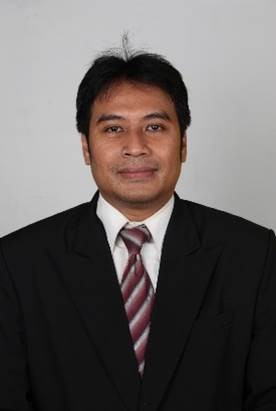Case Document
PT. PARAGON TECHNOLOGY INNOVATION: STRATEGIC MANAGEMENT IN MAKING DECISION AND TRUSTING ITS OUTSOURCE COMPANY
Nurhayati felt reluctant to let the outsource company manage the Beauty Advisor. She was to worry the outsource company could not maintain the quality of their service. But, this step should be taken, since Paragon will have to focus on their main business, the business of make-up. That’s why, she decided to keep the recruiting, training and determining the pay under her company, instead of letting it to the outsource company. Nurhayati will be focus more on developing product quality and quantity, as well as building more warehouse for the upcoming years, she hopes that by such strategic move it would made her company compete in the market, and however, any kinds of strategy would affect them financially.
The purpose of outsourcing Beauty Adviser Staff of Wardah rather than run and managed by itself is to create cost efficiency in the Corporation in order to keep it stays competitive in the market. This purpose has been asserted by Nurhayati as the top management. Since February 2017 the Corporation has outsourced its Beauty Adviser Staff to other party. Then, it is expected that Corporation can enjoy the cost efficiency and it can be more focus on the core-business. However, since the outsourcing of Beauty Adviser Staff just started several months ago, it is not appropriate period to evaluate whether the purpose of the Corporation is achieved or not. To be able to evaluate the Company purpose from financial perspective, at least need one year period considering other related cost. The cost of outsource Beauty Adviser Staff must be smaller than the cost when the staff run and managed by itself. How efficient it is, still needs time to see.
YAYASAN GINJAL DIATRANS INDONESIA (YGDI) ON THE AFFORDABLE HEMODIALYSIS
Back in 2012, patient with kidney failure in Indonesia reach more than 150.000 people that needs dialysis treatment, but however, this treatment only to serve for 100.000 people, and few patients only that afforded to pay the treatments cost. While there were many issues related with insufficient financial capacity for patients with kidney failure, and there is one foundation that aimed to help solving this problem. Although it was not the only one exist, YGDI (Yayasan Ginjal Diatrans Indonesia) through Dr. Bimanesh and team, struggling to find the best solution in order to bring the aim to reality. The struggle is getting more complicated, when YGDI pushed to create money, to finance themselves to run their daily operational. They can use GAKIN or JAMSOSTEK (later known as BPJS) only for the purpose of patient’s treatment. This issue makes YGDI think hard, with limited resources, how can they survive as a foundation, and concurrently still deliver good service to their patients?
PT INDOFOOD SUKSES MAKMUR: INTEGRATING SUSTAINABILITY INTO CORPORATE STRATEGY
In general this case study describes the major drivers and activities of PT Indofood Sukses Makmur to become a sustainable organization. This case also dwells on Indofood business environment scanning process in order to map out the real problems that have to be attacked. The objectives of Indofood sustainability strategy was to reduce the company’s negative impact on the social and natural environments. This case study also describes other benefits that Indofood received from their sustainability initiatives such as the company’s competitive advantage.
The case discusses the local and global environment changes which forced Indofood to make adjustments to their business strategy. It also portrays Indofood’s competitive environment that was affected by the local and global situation changing. This case also covers Indofood’s social sustainability (labor conditions and community development) as well as the environmental sustainability management initiatives as the biggest instant noodle producer in Indonesia.
BATTLE THE OF OLD VS SHARING ECONOMY: HOW GO-JEK & GRAB DUEL FOR INDONESIA AND CRIPPLED BLUEBIRD
BANK NEGARA INDONESIA SYARIAH: HASANAH CARD
This case study was explore about the concept of Hasanah Credit Card (HC) of BNI Syariah (BNIS HC). As a new product from Sharia Business Unit, BNIS HC should find the way to compete with other syariah product in Indonesian market as well compete with conventional card rivals. Afterwards BNIS HC also have to capture the consumer trend yet fundamental approach towards a complete framework to apply in daily business activity. BNIS HC main task is to understand and win the competition by choosing it’s own segments or comunitty. Yet competition for profits goes beyond established credit card rivals to include four other competitive forces as well: customers, suppliers, potential entrants, and substitute products.
Main goals of this case was to get audience have a view of the main challenges that BNIS was facing improve the credit card market with competitive offering.
RAJA BASO TAHU SABOGA: PAST, PRESENT, AND FUTURE
BMI, Business Monitor International, (2012) food and drink industry report at second quarter 2012 noted that the Indonesian consumer remains in a good shape. It also supported by the demand and positive of strong consumer confidence. The headline industry data in Q2 showed food consumption growth already increase 7% and CAGR forecast to 2016 = +7.7%. It proves a positive growth into the fast food business platform where Raja Baso Tahu SABOGA is among of the industry key players. However, a risk of another global financial crisis could play out over the coming quarters that given by problems facing the developed world and unsuitable nature of China’s growth boom. Should this happen an Indonesian consumer growth will inevitably suffer a hit.
Raja Baso Tahu SABOGA Management that has successfully well formed the business model and executing an accurate business strategy to respond a dynamic forces that affecting growth and change in the business’ mission and vision in its business platform from year to year since they established in 1986, again, they need to be prepared more to do extra business exercises to answer a gloomy thought that tailing both Mr. Benny Sunjaya and Mrs. Suswati Purwita, the founder of Raja Baso Tahu SABOGA. How Raja Baso Tahu SABOGA may keep up over the years? Will Raja Baso Tahu SABOGA still become the leading products among the players?
BANK SYARIAH MANDIRI: GOLD PAWN PROGRAM
This case study explores about Gold Pawn in Bank Syariah Mandiri, Indonesia. Gold pawn is a gold-based collateral financing services as an alternative to earn cash directly. However, the Central Bank of Indonesia (Bank Indonesia) considered gold pawning practices are inconsistent with the original concept and became instrument of vehicle of speculation. The central bank then issued Regulation letter to eight Islamic banks and Islamic business units in order to reorganize their services. The objective of this case is to give the audience a view of main challenges in BSM to improve the system of standard operating procedures based of Regulation Letter from Bank Indonesia.
VIRTUAL BANKING CHANNEL IN CONSUMER BANKING THROUGH “BNI TAPLUS”
In some period, BNI became the largest bank in Indonesia. However, with the rapid development and extroverted economic situation in Indonesia, BNI was finally surpassed by other banks and forced it into entering a heavy competition. The competition primarily came from banks and foreign bank merger activities, in terms of the market share of Third-Party Funds (TPF).
Of course, BNI was not to be defeated by its competitors. In fact, there was always a desire to seize back the crown as the largest bank in Indonesia. Therefore, BNI had its Division of Funding and Consumer Services enhanced its performance by improving the distribution channels such as BNI electronic distribution through ATM, Phone Banking, Mobile Banking, and Internet Banking.
TURNAROUND RECAPITAL’S WAY CASE STUDY OF PT AETRA AIR JAKARTA
Recapital acquired PT Thames PAM Jaya (TPJ), in year 2007, when the performance of the company experienced a downturn for three consecutive years (2005-2007). Besides, for about 9 years operating in Indonesia, PTJ never reached the target set by Government. However, after Recapital acquired 95% shares, the company experienced a turnaround, where the company’s condition gradually improved and experienced significant growth in over the next 3 years (2008-2010). Recapital made changes to the management of the company ranging from changing the name of the company, until the renewal in human resources, culture, and organizations in it.
Recapital already had a good reputation and well-known expert in revamping companies that were in bad financial conditions. From 2002 to 2008, there were at least 6 companies being acquired and successfully improved by Recapital. This was a strong indicator that explained PT Aetra’s significant growth after the acquisition.
This case study describes the success story of Recapital’s turnaround strategy in PT Aetra, what kind of turnaround strategy they used, how the turnaround strategy could be accepted, and what made this strategy successful.
XL AXIATA: OVERTURNING INDONESIA’S TELCO INDUSTRY
When Hasnul Suhaimi became CEO of XL Axiata in September 2006, he initiated dramatic changes to raise the company’s rank and revenue. After over a decade of XL always ranking third in Indonesia’s cellular provider industry and a market share of less than 15 percent, Suhaimi’s strategy not only influenced the telecom industry to the benefit of consumers all over Indonesia, he also moved XL Axiata to second place and increased its market share to more than 20 percent.
To achieve this, Suhaimi had to change the business strategy from high-price, low-volume to low-price, high-volume. To execute the strategy, he had to change the company culture, as well as its people management practices. The results affected the nation’s telecommunication industry: prices plummeted, competition increased, and consumer spending increased.
The challenge in this case study is to define a strategy in order to sustain in a static market where competition used similar strategies on the same targets.








